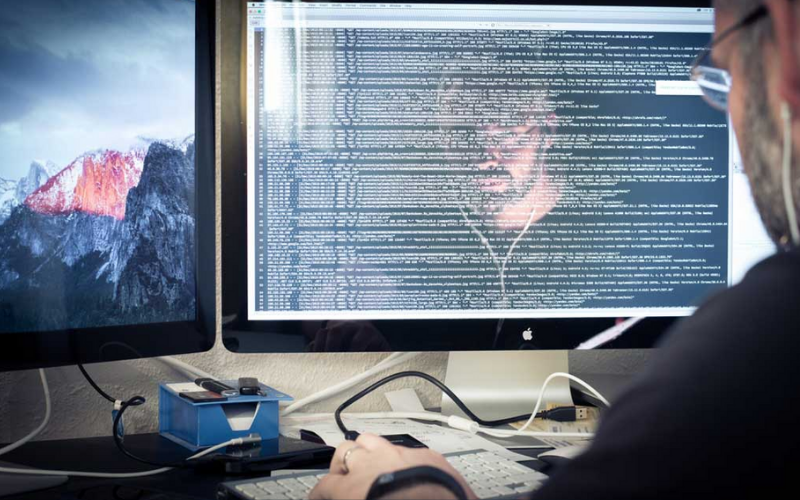In today’s digital world,
website development and web design have become a hot topic. Many businesses are
now trying to start their website for business or improve it. However, creating
a website that attracts visitors, produces revenue, and collects subscribers
necessitates a combination of excellent coding and design talents.
To improve their online
presence, companies are looking for both web designers and web developers these
days.
although some elements of a
website designer's job are similar to those of a website developer, the line
between the two is becoming increasingly blurred. But what is the difference
between them?

The many types of web
developers and designers can create websites for a wide range of individuals
and corporations. With so many companies putting their operations online, now
is an excellent moment to pursue a career in website development. The first
step, though, is to decide whether you want to work as a web designer or a website
developer and understand their difference.
In the following, we’re
going to explain and compare these two positions so that you can decide which
one is a better career path for you or which one you need to hire.
What
is a Web Designer?
A website designer is
someone who is responsible for the appearance and usability of your website for
business. This person’s major role is to concentrate on the style and overall
feel of the website, utilizing applications such as Photoshop to make it more
appealing.
In other words, a web
designer can be described as a graphic artist who creates and maintains a
website's essential structure and is in charge of creating a website's layout,
usability, and visual look.
Before beginning work on a
site, they usually meet with customers to discuss the style of site they want
to build and the features they want to include.
After this data is
collected, web designers construct an interface and user experience that is
simple to navigate and enjoyable for the user.
Web designers will conduct
usability testing and survey potential consumers for feedback to ensure that
their design of the website for business is effective. They'll also keep up
with the newest website trends and technologies to ensure that your site is
both modern and unique.
🔘 Related: TOP 11 Web Development Trends in 2022 and 2023
Web designers must keep up
with the newest web design trends and follow certain guidelines and best
practices in order to deliver best results.
Website designers should be
able to create customized experiences that appeal to the target audience's
requirements and motivations. They must also balance their vision with a grasp
of how their design choices affect the coding of a website.
This usually entails
conducting significant study and planning before committing to a website's
final design.

The skill sets that web
designers require to be successful differ depending on the function and
expertise of each individual. However, there are a few key ones in general
which include complete knowledge of HTML and CSS, understanding website design
Principles, creating responsive design, optimization of CRO (Conversion Rates),
prototyping and wireframing.
In addition, there are a
variety of non-technical skills that every web designer must have. Strong
communication skills, for example, are required to communicate with clients effectively
in order to define and deliver expectations.
Having the capacity to work
together with others on a team, such as website developers, is also critical
for ensuring that each project runs successfully.
Types
of web designers
Assume you're a website
designer working for a development agency and you get a new customer.
Your job is to have a
meeting with the customer and learn everything you can about the brand and its
rules and the customer’s vision for the website for business.
You also have to think about
concepts, come up with some of your own ideas, find and draw on mutual
inspirations, and finally make some mockups to show the client.
Web designers can be classified
in three categories which are explained in the following.
UX
Designers
UX designers make sure that
the website is arranged in such a way that users are engaged and have a great
experience. In addition, they have to create human-centric designs which are
based on data.
This entails performing
extensive investigation and testing in order to collect and analyze data that
will be utilized to inform their final design decisions.
UI
designer
A UI website designer
enhances the way consumers interact with items on the website for business.
This is accomplished by converting complex brand ideas and values into a fun
and easy-to-navigate website.
UI designers play a major
role in web design and try to improve a website's usability and optimize it
such that it encourages conversions.
Visual
designer
A visual designer is a cross
between a UX and UI designer and not only improves the user experience through
creative and coding abilities, but also resolves design difficulties.
This person also helps in the development of a brand's own style
or tone of voice.
What
tools do web designers use?
Web designers are largely
responsible for ensuring that the code is aesthetically beautiful and
user-friendly for users of a website for business, rather than knowing how it
works.
They'll make use of graphics
design applications such as Adobe Photoshop, GIMP, Illustrator, and Inkscape
and develop prototypes and wireframes to design the website's final layout.
What
is a Web developer?
A website developer's job
description is quite similar to that of a website designer. Web developers play
a vital part in website development because they are in charge of the
implementation stage.

The primary responsibility
of a web developer is to create and maintain a website's essential structure.
Their job entails a great deal of technical effort, including the use of
advanced programming languages and intricate coding.
In a word, they take
advantage of web designers' ideas and concepts and try to turn them into real and
completely functional websites.
Web developers may also handle
a variety of post-launch tasks, such as providing continuing support and
maintenance and resolving server or hosting difficulties, in addition to
testing and debugging.
Every web developer must
have certain technical skills to perform his job. For example, they have to
understand programming languages such as HTML, CSS, PHP and JavaScript, be
knowledgeable in testing and debugging, SEO and Content Management Systems.
🔘 Read More: Types of websites and how to design them
Types
of web developers
Web developers, like website
designers, can be categorized based on their specialty.
Back-end
website developer
When users visit a website
for business, the back-end refers to what they can't see. It has to deal with
the website's underlying structure, or in other words, the operations that make
it work.
Back-end developers are
skilled programmers who use programming languages such as PHP, SQL, C#, or Java
and instead of focusing on what the browser displays after a request, their
development efforts are focused on developing web servers and databases.
Front-end
developer
Front-end developers use
CSS, HTML, JavaScript, and other languages, as well as Content Management
Systems like WordPress, to create the website for business.
Front-end development which
is also known as client-side development, is primarily concerned with coding
and programming of a website's visual aspects that users view.
As a result, there is a lot
of collaboration and overlap between front-end developers and website
designers.
Full-stack
web developer
This type of web developer
codes a website's front and back ends and has a thorough understanding of how
these components work and interact.
Full-stack developers set up
and configure servers, code APIs, query databases, in addition to writing web
pages using programming languages such as CSS, HTML, and JavaScript.
What
tools do web developers use?
Web development tools have become
more diverse and advanced in the last few years. As a result of this
advancement, website developers can use well-tested libraries to simplify their
productivity and have access to more responsive design options.
Some of the main web
development software tools that developers use includes Sketch, InVision Cloud,
Sublime Text, Foundation and Chrome DevTools.
Conclusion
There are many different
types of technology specialists who contribute to the creation of a new website
for business.
Web developers and web
designers are two of the most essential professions in today’s digital world,
with particular responsibilities that help creating websites that are easy to
use and also appealing.
Both web designers and web
developers assist in the creation of websites. And, because the two fields
overlap, it's simple to get them mixed up.
In the creation,
construction, and maintenance of websites, both website designers and web developers
play an important role. However, these two positions are reliant on one another
to provide a high-quality output.
After reading this article,
we hope you have a better idea of how a web designer differs from a website
developer.
The key distinction is that
developers concentrate on the project's technical aspects, such as programming
and coding, but designers are in charge of the aesthetic and conceptual work
required to make sure that UI and UX are great.
If you need a website developer
to start your website for business or want to hire a web designer to improve
it, contact our development agency now.